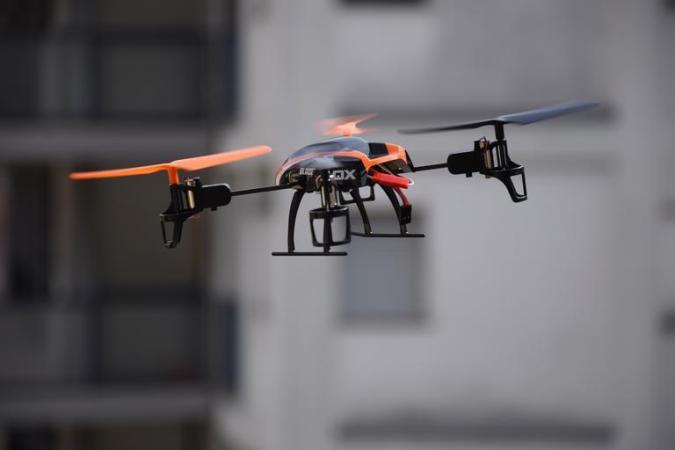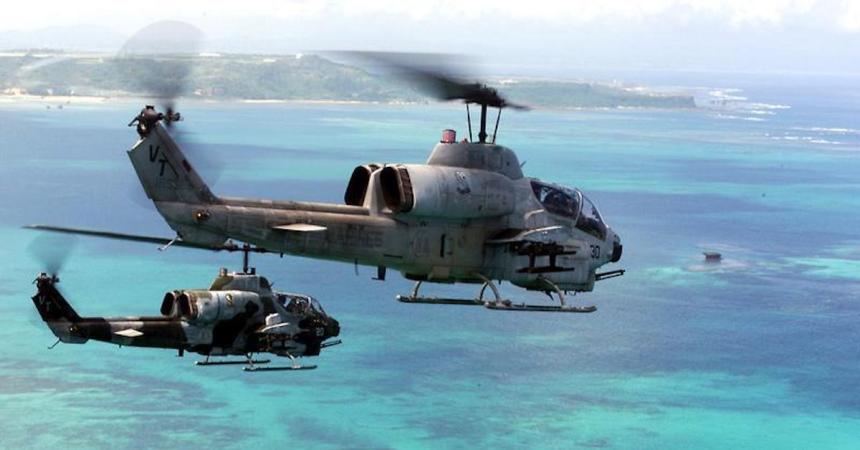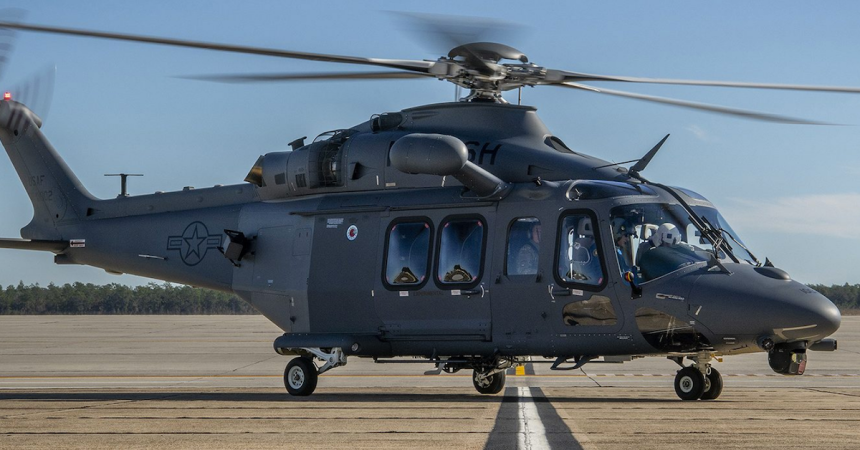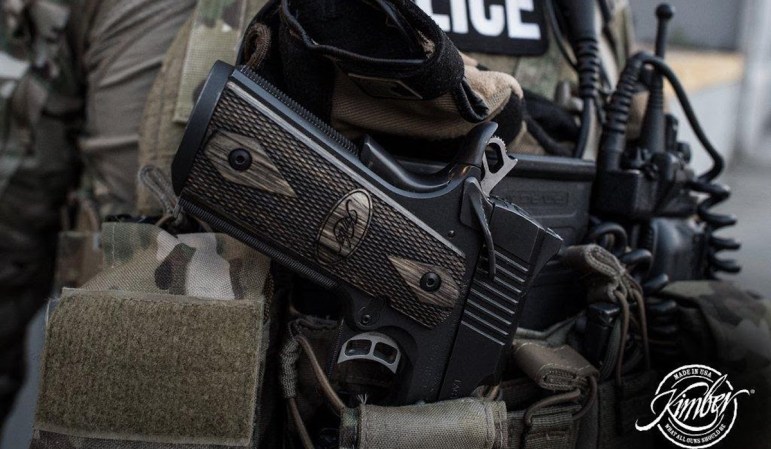With the technology of war rapidly changing, military leaders will have to rewrite the books on tactics and strategy.
Here’s WATM’s take on what an infantry assault will look like in 2025, considering that by then we’ll have cyborg insects, powered body armor, and steerable sniper rounds.
The mission

A rifle platoon is tasked with assaulting a compound consisting of four buildings using only their own manpower plus a sniper team.
They will be wearing TALOS armor, an “Iron Man”-like suit which covers nearly their entire body, cools them off when necessary, and actively assists their movements to improve performance and reduce fatigue.
-15:00 — The platoon stages for the assault
The platoon moves into its assault and support positions. It has all of the troops it did in 2015, plus a drone operator.
Its weapons squads will be providing the base of fire, and are separate from where 1st, 2nd, and 3rd squads are preparing to assault. The sniper team is on overwatch, protecting the platoon from a nearby hilltop.
-5:00 — Drones are prepared for the operation

The drone operator activates his quadcopters. These small bots are capable of flying through buildings, creating 3D maps, providing surveillance, and lifting up to nine pounds. Four drones come from a special pack that the operator carries in place of a standard rucksack. Another eight come from two LS3 Mules moving with the platoon. The operator has 12 drones total, split into six pairs.
Weapons squad brings up video feeds from two of the drones on a tablet.
0:00-1:00 — The assault begins
At the platoon leader’s command, the platoon sergeant moves forward with 1st squad and initiates the breach into the enemy area. 1st squad fights the enemy personnel on the perimeter, forming an opening for follow on forces.
Simultaneously, the drone operator orders eight of his drones to fly to the target buildings ahead of the platoon.
Weapons squad begins laying down a base of fire. Weapons squad’s close combat missile teams begin searching for the enemy’s anti-drone, counter-rocket/artillery/mortar laser trucks.
They see the first laser truck between themselves and the compound. It knocks one of the advancing drones out of the sky, but the missile team fires two Javelin missiles at it. The laser swivels to counter the new threat and shoots down one missile in flight, but the second strikes the truck and destroys it.

Another drone goes down to laser fire when a still-hidden truck engages it.
1:00-4:00 — Breaching and mapping
Second and 3rd squad begin moving onto the objective as 1st squad forms and holds the breach in the enemy’s perimeter defenses.
Two drones are down, but the six remaining on target redistribute themselves to form three pairs. The first two pairs move into the the southernmost buildings on the compound and begin mapping from the inside. The robots move quickly to avoid enemy fire, dodging in and out of windows and flying close to ceilings.
One drone is taken down when an enemy soldier strikes it with his rifle butt and then immediately stands on the drone, holding it in place. The drone operator sees an alert and sends the self-destruct signal. A pound of C4 explodes inside a fragmentary case, killing the first soldier and wounding two others.
The other three drones send their maps to the advancing 2nd and 3rd squad leaders who relay key information to their men as they reach the entrances to the building. The drones then fly to the roofs and park themselves on the edges, looking for the other enemy laser.

4:00-5:00 — Striking the second laser and establishing an automated perimeter
One of the drones is spotted by the enemy laser team as it lands on the roof. The laser team waits for the drone’s rotors to stop spinning and then burns through its body, destroying it. The sniper team detects the beam on a sensor and uses it to spot the truck.
They radio the platoon sergeant and fire on the laser turret, cracking the glass and disabling the system.
With the counter-drone lasers down, the operator is free to signal the four drones that remained with the LS3 mules. The drones begin taking flares, mines, and sensors from the mules and deploying them at pre-programmed points around the objective.
The two remaining rooftop drones take off again and head to the third target building to begin mapping.
An Argus — a drone that can tell what color shirt the enemy is wearing from 17,500 feet overhead — heads to the battlefield.
5:00-6:00 — Securing the first buildings
Second and 3rd squad hit the first pair of buildings. Second squad knows to expect enemy casualties in the first room since the drone went off there. With the drone-generated maps, the squads know ahead of time where windows, doors, and most furniture are in the rooms. They take the buildings quickly and capture two enemy soldiers.
With the first buildings secure and no enemy personnel spotted around the perimeter, 1st squad attacks the laser truck and kills the crew. It then breaks into its fire teams and holds the captured buildings while 2nd and 3rd squads prepare to move on the second pair of buildings. The medic sets up a casualty collection point and begins treating the POWs. A Medevac is called.
6:00-8:00 — Hitting the second pair of buildings
The sniper team sees a man flee from the fourth target building and radioes the platoon leader. One spotter keeps an eye on the runner until the Argus comes on station and takes over, covering 15 square miles and tracking all people on the battlefield from 17,500 feet. The spotter returns to watching the remaining target buildings.

The drones mapping the third target building are captured and the operator orders both to detonate. 2nd squad hits the third building with a mostly complete map while 3rd squad takes the fourth building more slowly. 3rd squad takes one casualty during the attack, a gunshot wound that catches a soldier through a gap in the stomach armor of the TALOS. The TALOS immediately squeezes the fibers in that part of the suit, putting pressure on the wound. It also alerts the medic, squad leader, and platoon leadership.
8:00-12:00 — Treating the wounded
The squad leader orders a fire team to move the soldier to the casualty collection point. The medic is low on medical supplies but knows he has a patient with a gunshot wound through the abdomen coming in. He requests additional supplies to the CCP from the drones and the drone operator confirms it as a top priority.

Two quadcopters with the Ls3 mules grab an aid bag from a mule’s back and fly it to the medic’s position, arriving at the same time as the patient. The medic grabs an injector of ClotFoam from the pack and tells the TALOS to relax the pressure on the wound. He places the injector into the hole formed by the bullet and fills the soldier with foam that will stop bleeding, hold the damaged organs in place, and be easily removed in surgery. He alerts the platoon sergeant that the patient is ready to be medically evacuated.
12:00-15:00 — The runner returns with friends
The Argus operator radios the platoon leader and tells him the runner is returning the the battlefield with two friends in a vehicle with a mounted machine gun.
Weapons and 1st squad are establishing the platoon perimeter and the platoon leader alerts them and the sniper team to the inbound threat.

A missile team moves to the expected contact side, but the sniper team already has eyes on the target. Knowing the vehicle will be moving quickly and bumping on the road, he loads EXACTO rounds. He leads the target and fires. The vehicle speeds up while the round is in the air, but the sniper continues to mark the target and the round turns in the air, finally ripping through the driver’s neck. With the vehicle stopped, the snipers quickly dispatch the other two fighters.
23:00 — Medevac and site exploitation
The medic gets his patients onto the Medevac bird and the platoon begins site exploitation. Their exploitation is protected by a drone that can watch the surrounding 15 square miles for threats, static defense placed by their drones, a sniper team with steerable rounds on overwatch, and their platoon perimeter.


























